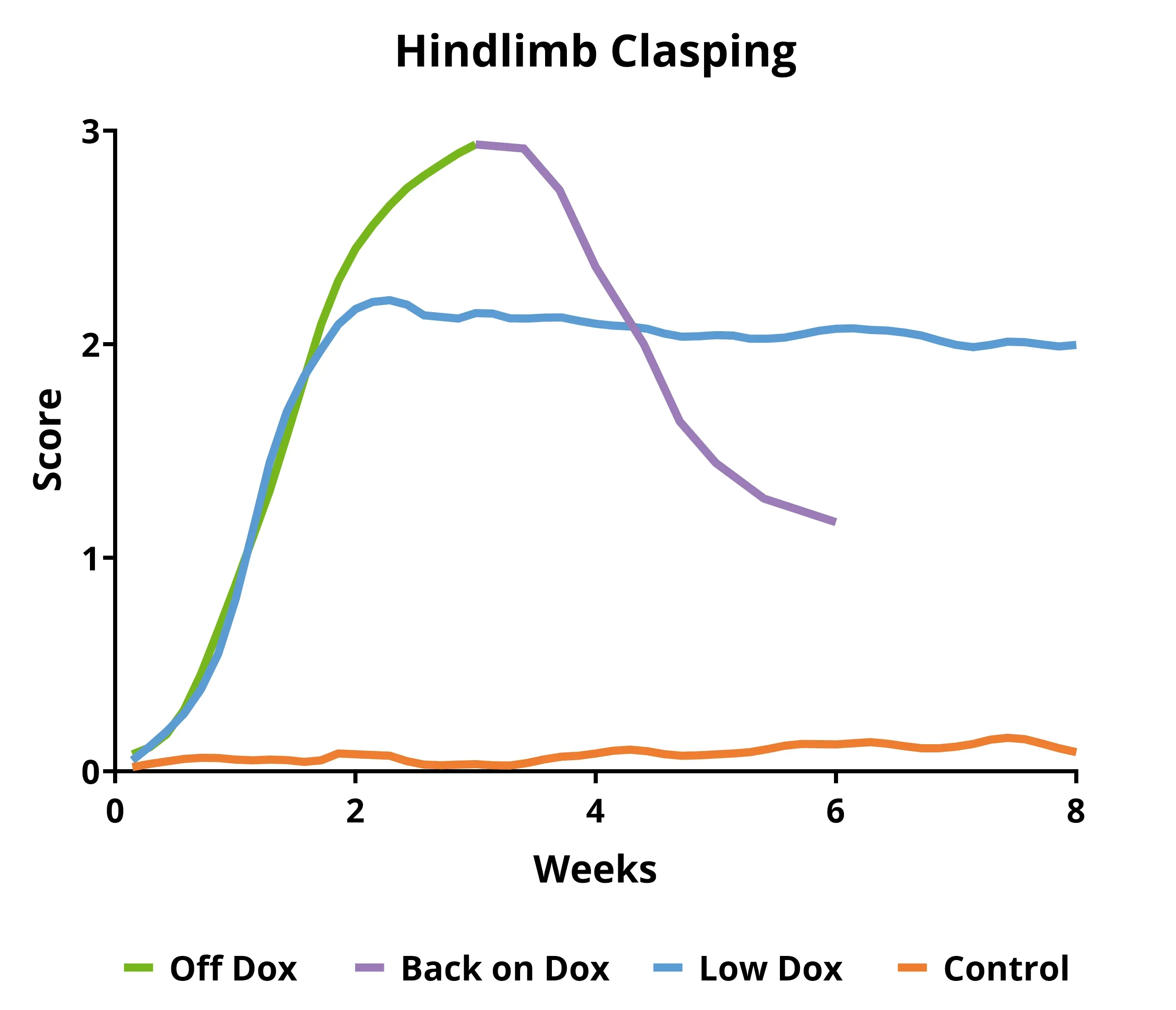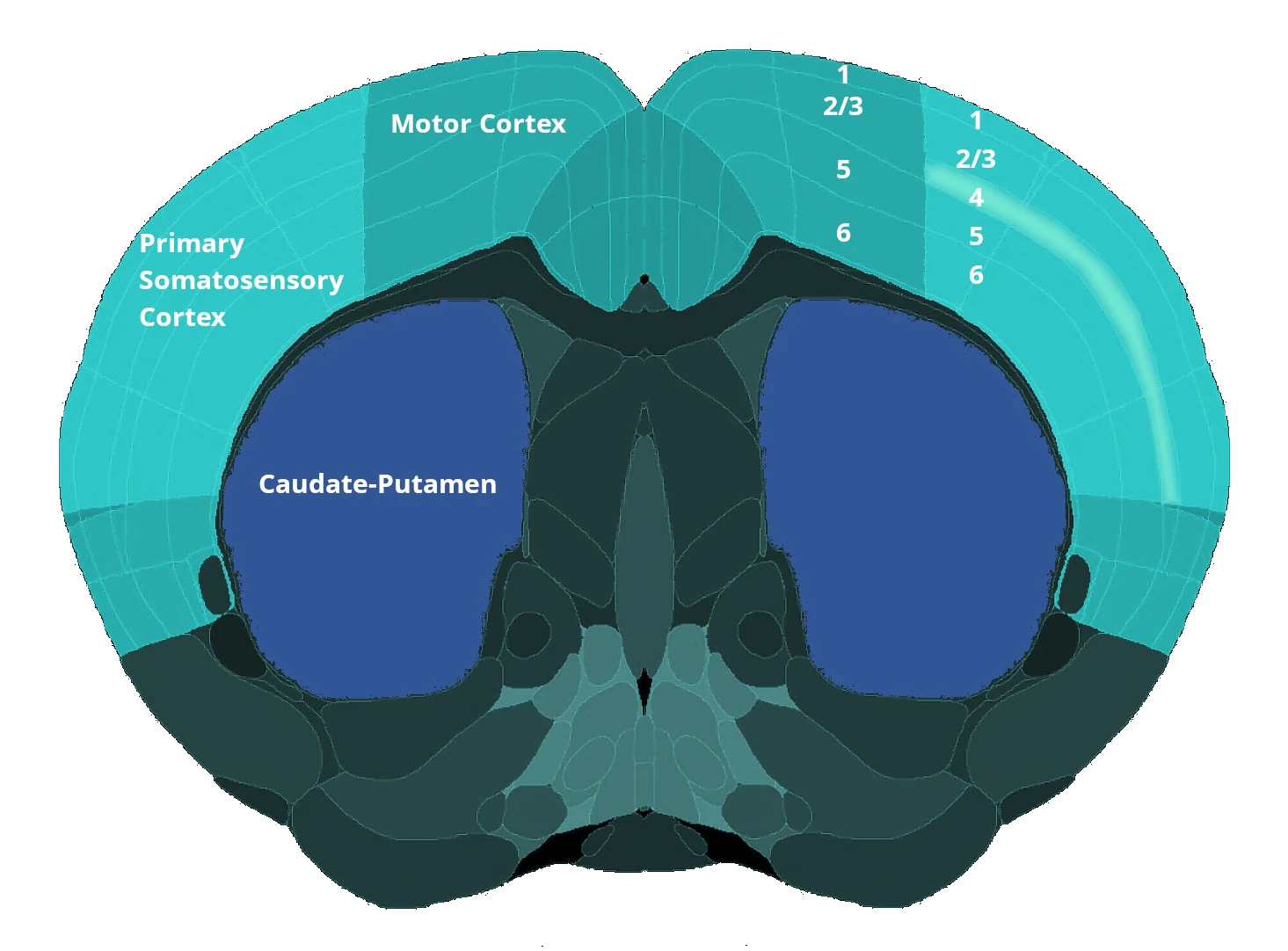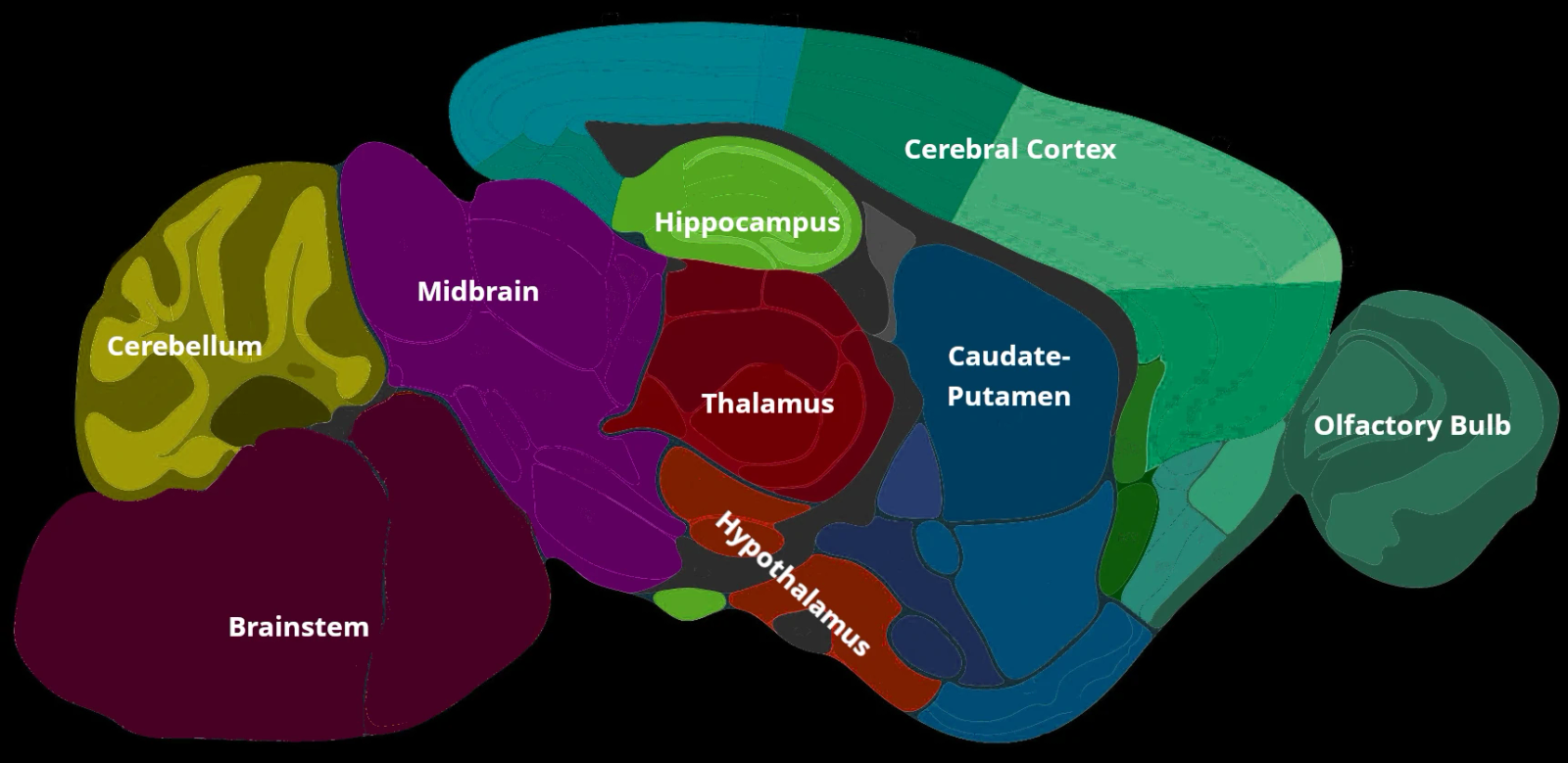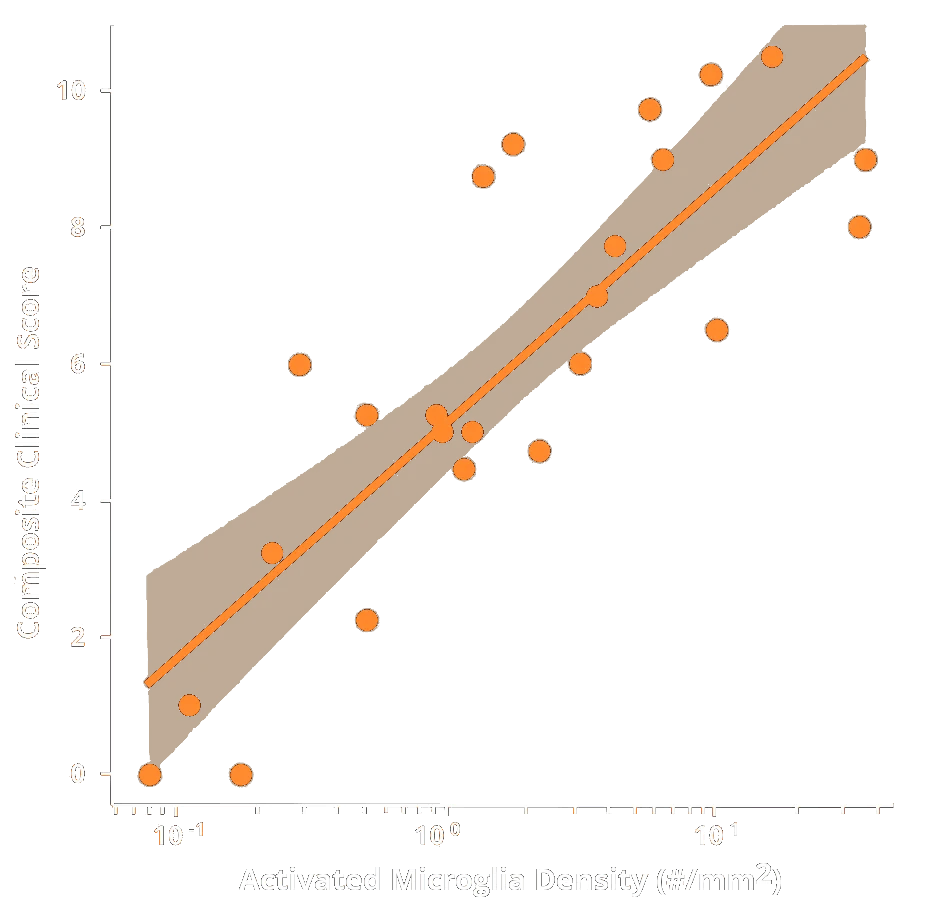Multiplex Immunofluorescence of Brain Sections from the “Low Dox” TDP-43ΔNLS Mouse Model of ALS
TDP-43 Model Overview
Cytoplasmic TDP-43 (or TDP43) aggregates are a hallmark of familial and sporadic ALS. While several transgenic (tg) mouse models of amyotrophic lateral sclerosis (ALS; also called motor neuron disease [MND]) with TDP-43 aggregation exist, they each have their respective strengths and weaknesses. Learn more about animal models of ALS in our Resource - ALS Mouse Models for Drug Development.
At Biospective, we use both the original and modified versions of the rNLS8 (or ΔNLS; delta NLS; dNLS) ALS mouse model of TDP-43 proteinopathy ("TDP-43 models"):
- Original mouse model ("Off Dox"): rapidly progressing (weeks)
- Biospective mouse model ("Low Dox"): slower progressing (months)
Significant advantages of these TDP-43 models for ALS researchers include:
- Mislocalization of TDP-43 to the cytoplasm
- Progressive motor deficits
- Muscle weakness, denervation, and atrophy
- Motor neuron degeneration & regional brain atrophy
- Neuroinflammation
- Brain, spinal cord, and neuromuscular junction (NMJ) pathology
The model time course is predictable and the measures of disease progression are highly reproducible, making it an excellent model for the evaluation of therapeutic agents in preclinical studies. Learn more in our Resource - TDP-43 ΔNLS (rNLS8) Mice for Drug Development.
TDP-43 Mice Generation
rNLS8 (NEFH-hTDP-43-ΔNLS) double transgenic ALS mice ("TDP43 mouse model") are generated by breeding mice having the NEFH-tTA transgene with mice having the tetO-hTDP-43-ΔNLS transgene. This TARDBP model was originally developed and reported by Walker et al. (Acta. Neuropathol., 130: 643-670, 2015). It is a model of amyotrophic lateral sclerosis (ALS) or motor neuron disease (MND). It can also be used as a TDP-43 pathology model of frontotemporal dementia (FTD) or frontotemporal lobar degeneration (FTLD).
These TDP-43 transgenic mice are maintained on a Dox diet during breeding and the initial aging period (typically 5 to 12 weeks-of-age). The mice are then changed from a Dox diet to a standard diet ("Off Dox" model) or an alternate protocol developed by Biospective ("Low Dox" model) to allow for human TDP-43 expression. An interesting feature of this model is that pathologic and functional recovery can be achieved by putting mice back on a Dox diet.

Our Validated TDP-43 Transgenic Mice Measures
- Body weight
- Motor scoring (hindlimb clasping, tremor, grill agility, paralysis)
- Grip strength test
- In vivo muscle electrophysiology, including Compound Muscle Action Potential (CMAP) (see ALS Mouse Models & Spinal Motor Neurons)
- Muscle atrophy measured by longitudinal, in vivo computerized tomography (CT) (see TDP-43 ΔNLS (rNLS8) Mice for ALS Drug Development)
- Neurofilament light chain measures in plasma & CSF
- MRI brain atrophy to measure neurodegeneration (see Brain Atrophy Analysis in Mouse Models of Neurodegeneration)
- Immunohistochemistry & multiplex immunofluorescence
Learn more about the translatability of this model to human ALS.
Microscopy Images
The Interactive Image Viewer below allows you to explore entire Multiplex Immunofluorescence tissue sections from our TDP-43 transgenic mouse model.
You can pan around the image using the left mouse button. You can zoom in and out using the mouse/trackpad (up/down) or the + and - buttons in the upper left corner. You can toggle (on/off), change color, and adjust image settings for the channels in the Control Panel in the upper right corner.
We suggest using Full Screen Mode for the best interactive experience.
Learn more about our characterization of this model, our validated measures, and our Preclinical Neuroscience CRO services.
Related Content
Up-to-date information on ALS and best practices related to the evaluation of therapeutic agents in ALS animal models.
Neuromuscular Junction (NMJ) Morphology & ALS Models
Insights into neuromuscular junction (NMJ), its role in amyotrophic lateral sclerosis (ALS), and tools & methods used to study morphological changes in NMJs.
ALS Mouse Models & Spinal Motor Neurons
An overview of the involvement of spinal motor neurons in disease progression in mouse models of Amyotrophic Lateral Sclerosis (ALS).
ALS Mouse Models for Drug Development
A guide to the most effective use of research animal models (mouse & rat models) of Amyotrophic Lateral Sclerosis (ALS) for preclinical testing of therapeutics.
TDP-43 ΔNLS (rNLS8) Mice for ALS Drug Development
This resource provides information about the use of the ΔNLS (deltaNLS, hTDP-43ΔNLS, hTDP-43DeltaNLS, dNLS, TDP43 NLS, rNLS8) TDP-43 transgenic mouse model of ALS for preclinical therapeutic studies.
Microglia Morphology in ALS, Alzheimer's Disease & Parkinson's Disease
An overview of microglial morphological analysis and the applications to neurodegenerative disease research and drug discovery & development.
Autophagy & Neurodegenerative Diseases
An overview of how cellular autophagy plays a role in brain health and neurodegeneration.
Autophagy and Transcription Factor EB (TFEB)
An overview of Transcription Factor EB (TFEB) and its role in autophagy and neurodegenerative diseases.








